#king constantine i of the hellenes
Text
Royal Tiara Challenge 2024 : Favourite emerald tiara. 👑
The Greek emerald parure.
The emeralds came to Greece with Queen Olga, who was born Grand Duchess Olga Constantinovna of Russia. She was the daughter of Grand Duke Constantine Nikolaevich, the second son of Tsar Nicholas I and the younger brother of Tsar Alexander II. Olga was only twelve when she met her future husband, King George I of the Hellenes, for the first time, and she had just turned sixteen when they married.






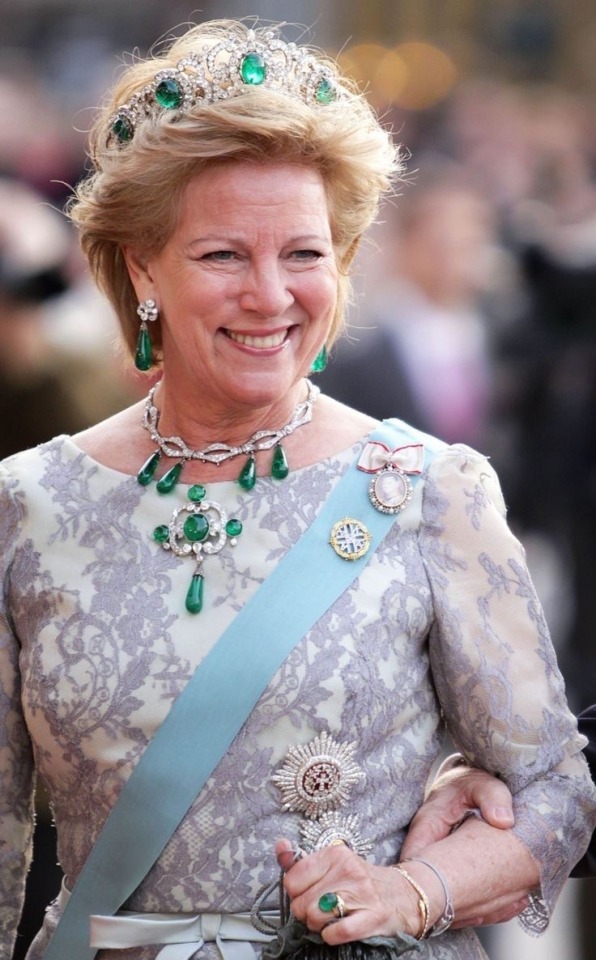
10 notes
·
View notes
Photo

“Queen Margrethe II allowing her nephews, nieces and their children to call themselves Prince/Princess of Greece and Denmark is super disrespectful to the Greek people and the Greek government. Other royal families do this as well like the time the President of Greece didn't go to Charles and Diana's wedding because Constantine II had been invited as "King of the Hellenes" or whenever Elizabeth II invited Constantine and his wife anywhere and they were referred by their titles. The blatant disrespect to the Greek Government and its people is beyond the pale.” - Submitted by Anonymous
“I sincerely hope that the next generation of the greek "royals" stop referring to themselves as "of Denmark." Cause it would feel icky if the relatives that have lived their entire lives in Denmark and speak Danish have fake French titles while the pretenders of greece still get to have importance because of they are royals "of Denmark." And none of them speak Danish. Side eyeing Margrethe ii on that one. 👀👀👀” - Submitted by Anonymous
35 notes
·
View notes
Photo

I consider myself King of the Hellenes and sole expression of legality in my country until the Greek people freely decide otherwise. I fully expected that the military regime would depose me eventually. They are frightened of the Crown because it is a unifying force among the people.
- King Constantine II of the Hellenes
An important chapter of Greek history ended on 11 January 2023, in Athens, with a deafening silence. The former king Constantine II died at the age of 82 in Athens. Some Greek media outlets referred to him as Constantine Glücksburg, not wishing to mention the royal title of the former monarch who was deposed in 1974.
The last member of the Danish dynasty to rule from 1863 until the return of the Parliamentary Republic was the cousin of the British monarch Charles III and one of the godparents of his son, Prince William, and the brother of Queen Sofia of Spain. But his death caused barely a rustle in Greece, a country that has been riven by divisions between royalists and democrats since its creation.
He was not given the state funeral he had so much desired. Neither the Greek Prime Minister, Kyriakos Mitsotakis, nor the President of the Republic, Katerina Sakellaropoulou, were present at his funeral on 16 January. His death "marks the formal epilogue (...) of a chapter that was definitively closed with the 1974 referendum," when Greeks voted by 70% to abolish the monarchy, said the prime minister in a terse message of condolence. The conservative leader also recalled "the eventful journey of former King Constantine, marked and punctuated by turbulent moments in the contemporary history of Greece." "History now has the floor. It will judge fairly and severely the Constantine of public life," he concluded.

The legacy of King Constantine II of the Hellenes remains a mixed one and mirrors the divided feelings of Greeks have to this day about their last king.
In many ways, Constantine was a victim of the vicious political infighting that had characterised Greek politics and its society for much of the period since the second world war. It perhaps needed a stronger, more experienced and more resolute approach to surmount the crises of his three-year reign than the young man in his early 20s could manage. In later life he said in an interview that he might have liked to be an actor or a journalist, but his fate was to spend his life as an ex-king, harried by Greek politicians and in turn harassing them in a prolonged legal fight for compensation for his family’s lost property, eventually through the European court of human rights.
Born in Athens, Constantine was the son of the Greek crown prince, Paul, the younger brother of King George II, and his German-born wife Princess Frederica, and was taken into exile as a baby following the Italian and then Nazi invasions of the country in 1940-41. His early years were spent first in Egypt and then in South Africa, before the family returned to Greece following the referendum that restored George to the throne in 1946. George died the following year, and Paul became king.
Constantine was educated at a private high school in Athens, modelled on the same lines as the German educationist Kurt Hahn’s principles at Gordonstoun, and afterwards attended Athens University to study law. A keen sailor, Constantine was a member of Greece’s winning sailing team at the 1960 Rome Olympics – the country’s first gold medal in nearly 50 years.
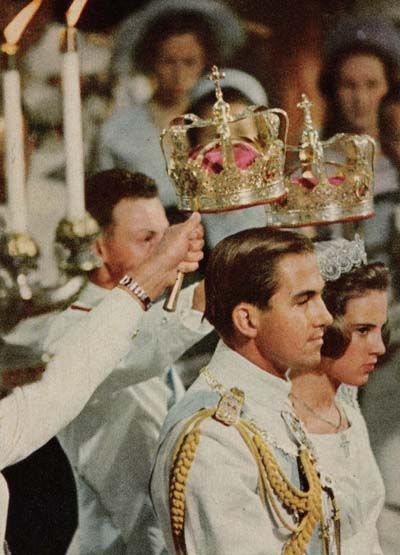
He succeeded to the throne aged 23 on his father’s death in March 1964, becoming head of state in a country that had not got over the civil war between communists and the Greek government of 1946-49, and where political tensions and divisions continued to run deep. The CIA, desperate to avoid Greece falling into communist hands, was also active in Athens. Greece was a strategic pawn between the US and the Soviet Union, each anxious to pull the country into its sphere of influence in the eastern Mediterranean. At the same time, it was attempting to modernise with social and economic reforms as an associate member and applicant to join the Common Market.
The month before Constantine came to the throne, a general election had produced a leftwing government under George Papandreou, following eleven years of rightwing government. Within a year, relations between the king and his prime minister were breaking down. Conservative army officers were alarmed by a perceived leftwards drift among the junior ranks, who were supported by Papandreou’s Harvard-educated son Andreas. When George Papandreou announced that he would take over the defence ministry himself, Constantine refused to allow him to do so, and the government resigned. In the hiatus that followed, the king attempted to appoint a government without holding an election and was accused of acting unconstitutionally.

When elections were finally called in April 1967, the likely re-election of Papandreou was forestalled by an army coup led by colonels. Constantine initially appeared to go along with the insurgents. He argued later that he had had no choice as the palace was surrounded by army tanks, but there were also persistent suggestions that he had been urged by the American embassy to do so in order to avoid another radical government. Many Greeks and civilian politicians never forgave the king for acceding to the coup, but within months he attempted a counter-coup of his own, fleeing to loyalist troops in the northern city of Kavala that December in an attempt to create a rival military support and force the junta to resign.
The operation was poorly organised and, although the air force and navy declared their support, the army and its officers rallied to the coup leaders. Support for the king melted away within 24 hours. Fearing bloodshed if it came to a military confrontation, Constantine and his family fled into exile, first in Rome and then a few years later in London.

There was no going back for the king. The junta, led by Colonel Georgios Papadopoulos, brutally consolidated their regime using censorship, mass arrests of opponents, torture and imprisonments, and were not going to reinstate Constantine after his attempted coup. When monarchist navy officers unsuccessfully attempted to overthrow the colonels in June 1973, Papadopoulos declared the country a republic, endorsed subsequently in a plebiscite widely assumed to have been rigged.
Nonetheless, when the regime fell following the Turkish invasion of Cyprus in 1974, to be succeeded by a civilian government, a further referendum was held to determine whether the king should be restored. Constantine was not allowed to return in order to campaign on his own behalf, though he was allowed to broadcast an address from London in which he apologised for his previous errors. But his maladroit interference with the civilian governments before the coup was held against him and the outcome of the vote in December 1974 was heavily in favour of a republic: by 69% to 31%.

Thereafter, for decades, Constantine was prevented from visiting Greece except briefly and on rare occasions: for his mother’s funeral in 1981 and for an attempted holiday in 1993, when he found his yacht was constantly harried by torpedo boats and aeroplanes. The following year, the Greek government revoked his citizenship and passport and seized the royal family’s property. “The law basically said that I had to go out and acquire a name. The problem is that my family originates from Denmark and the Danish royal family haven’t got a surname,” he said, adding that Glücksburg was the name of a place not a family: “I might as well call myself Mr Kensington.”
In 2000, the court of human rights found for the king in relation to the property, though it could only order compensation, not the return of his extensive estates nor the royal palace at Tatoi and awarded him only 12m euros (around £10m), rather than the 500m he had asked for: a reduction that the Greek government counted as a triumphant vindication. It nevertheless took another two years to pay the money and, when it did so, the government took it from its extraordinary natural disasters fund rather than general reserves. In retaliation, Constantine used the money to set up a charitable foundation in the name of his wife to assist Greeks suffering from natural disasters. He said: “I feel the Greek government have acted unjustly and vindictively. They treat me sometimes as if I am their enemy – I am not the enemy. I consider it the greatest insult in the world for a Greek to be told he is not a Greek.”

Generally, while expressing a wish to be allowed to live in Greece, which was granted in 2013, Constantine seemed equable about his fate and did not attempt to regain the throne. “All I want is to have my home back and to be able to travel in and out of Greece like every other Greek. I don’t have to be in Greece as head of state. I am quite happy to be there as a private citizen,” he told the news media in 2000. “Forget the past, we are a republic now. Let’s get on with the future.”
By the standards of the hapless Greek monarchy, Constantine II, the last king of the Hellenes, who died aged 82 on 10 January 2023, led a comfortable life in exile after a brief and turbulent reign. Of the seven Greek monarchs of the 19th and 20th centuries, three were deposed, one assassinated, two abdicated and one died of septicaemia after being bitten by a barbary ape in the royal gardens.
The Glücksburg monarchy was German-Danish in origin, imposed on Greece in the 1830s. During prolonged wrangling after Constantine’s deposition, the Greek government refused to give him a passport until he acknowledged that he was Mr Glücksburg, whereas he insisted he was just plain Constantine. As the last of Greece’s deposed monarchs he escaped lightly. But decades of exile in London, as one thing the Greeks did not want back from Britain, were not how he would have chosen to spend his life. For more than 20 years he was careful not to stir up anti-monarchist feeling in Greece, though he never relinquished his claim to the throne.

But Greeks have long memories. When the Greek colonels seized power in 1967, instigating seven years of tyranny, it was King Constantine who tried to stand up to them and rally the forces of democracy; but he did so rather naively and feebly.
Had Constantine succeeded, as did his brother-in-law Juan Carlos of Spain, he might have been a hero to his people. As it was, in the eyes of many Greeks, he remained tainted by family history and by his own clumsy mishandling of the political crisis that had brought about his exile. It’s a mistake he has freely acknowledged during the long 46 years of exile from his homeland.
There are Greeks still today who have always felt the referendum to depose him as King was rigged. For his part, Constantine, always continued to support democracy and the republic. Except with one caveat. According to many, Constantine never accepted his deposition. His Danish diplomatic passport still read "Constantine, King of Greece." In an interview with the television channel Skai in 2016, he even said: "I am not the former King Constantine, I am King Constantine, period."
In public at least, his fidelity to the republic bore fruit when he was allowed to come back to Greece and reside there. By all accounts his return from exile was a happy one where his home in Peloponnese coast gave him the peace he so long craved to live and eventually die in his own homeland. "All Greeks who live in exile want to return. It's in their blood," And so he got his wish. He was buried as a Greek, if not as a king.
RIP King Constantine II of the Hellenes (1940-2023)
#king constantine II of the hellenes#constantine II#greece#quote#royalty#monarchy#history#politics#coup#exile#king constantine II of greece
45 notes
·
View notes
Note
Please share more of your postcard collection with us? :)
Gladly!! 🫶🏻
These four were the first ones I bought.
1. Alexandra, Grand Duchess of Mecklenburg-Schwerin with her firstborn, Frederick Franz.
2. Alexandra and Frederick Franz with their little son.
3. Then Crown Princess Sophia of the Hellenes with her children.
4. Not sure if they were already King and Queen when this photo was taken but Constantine and Sophia with their children.

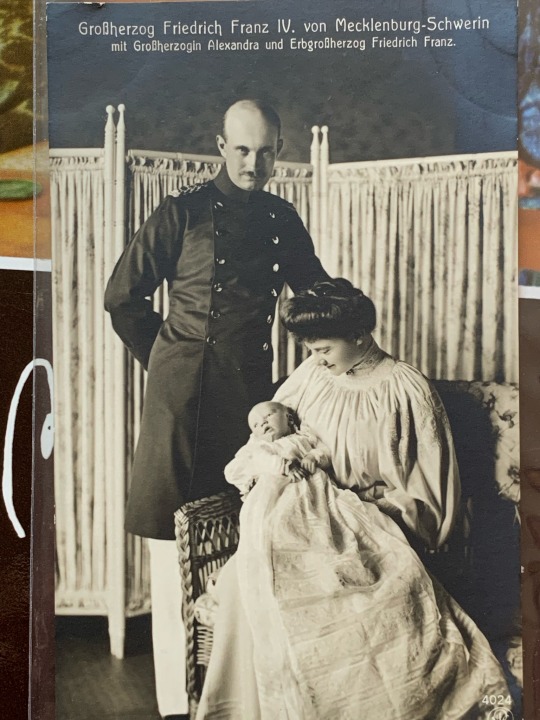
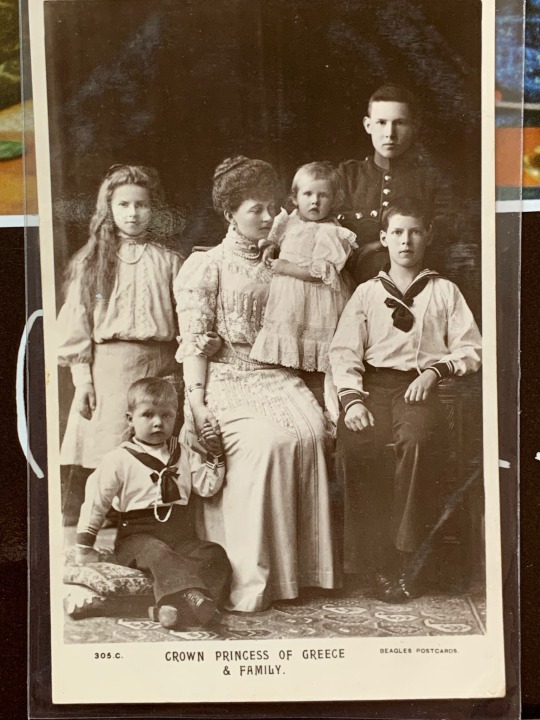
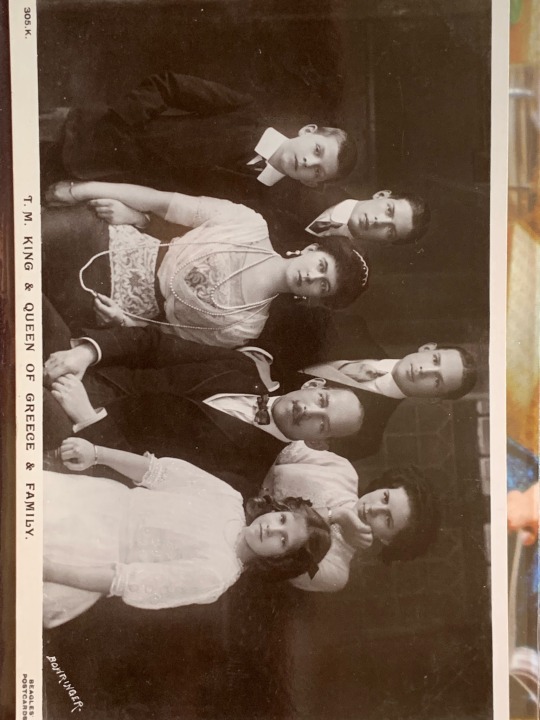
Frankly, I have no idea how I ended up with so many Astrid postcards. 🤭
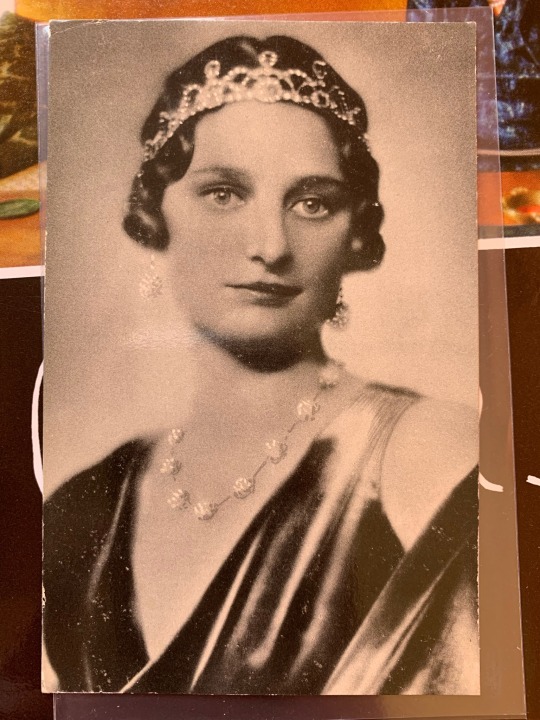
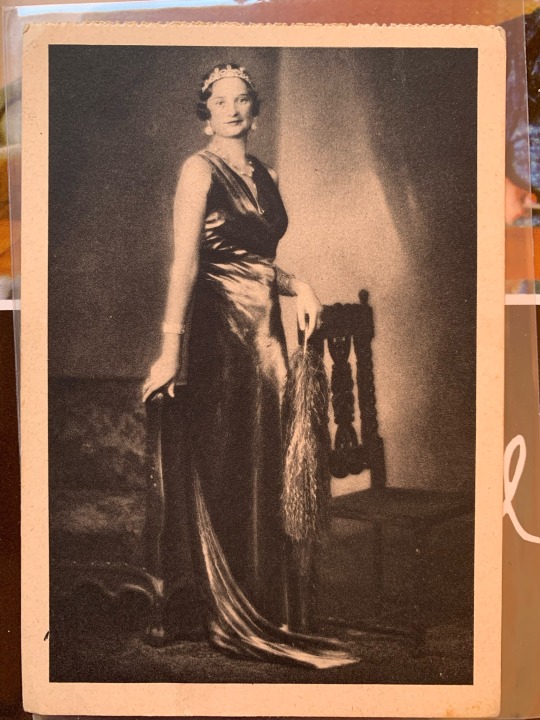


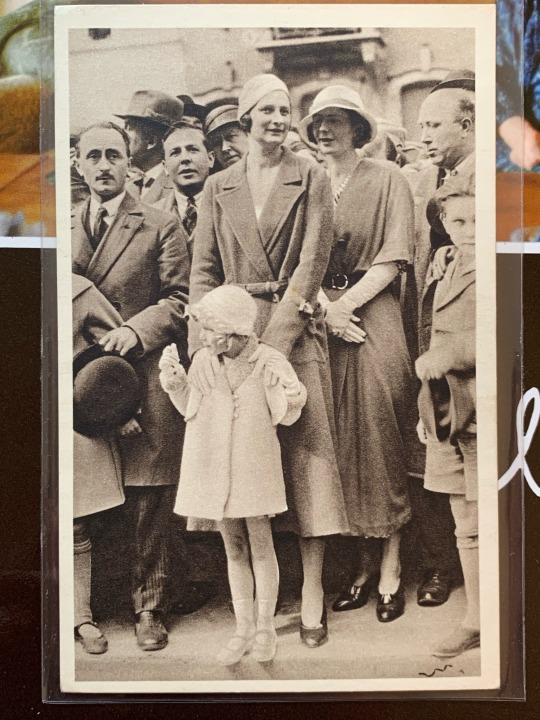
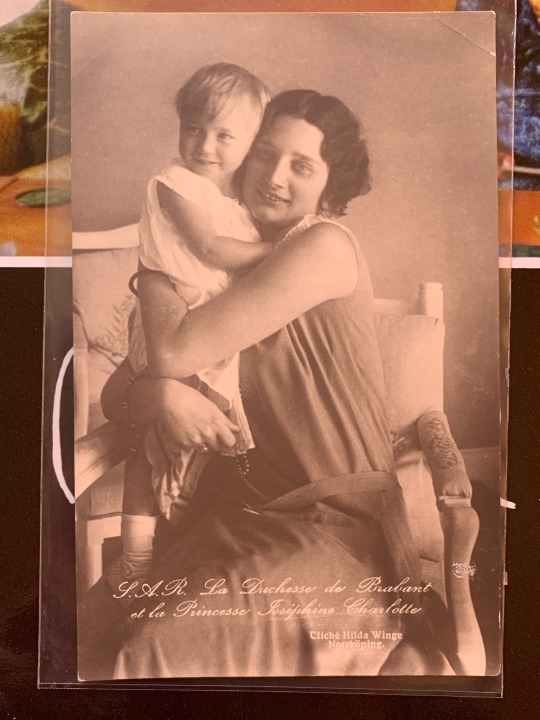
To be continued.
29 notes
·
View notes
Note
Hi Hi hi ANOTHER ANON HERE (I just wanna be private) I just wanted to say I love your work and your writing rocks!
I was wondering, despite the obvious voice lines and what we kinda get from Galactic Emperor Sigma's depiction (for the crumb it was - thanks Blizzard) how do you go about characterizing him? I kinda like how you aren't afraid to make him into a bit of an asshole (lol) do you have a headcanon you go off?
There are quite a few of you guys! And it's all cool - as long as you're all comfortable! Never wanna force anyone x
This is an interesting one as it relates to my personal views on Sigma as a whole, which I could go on for HOURS ABOUT. Mainly because the trailer makes him come across as this maniacal hubris-based scientist who is incredibly intimidating and self-interested in his own research. Then you have the in-game characterisation which is this rather tragic figure being manipulated by an organisation that uses him as a weapon.
There is this beautiful dichotomy in his character (which is why he's so beloved, as he has this depth on a self-referential level). I do not doubt that he is equally as gentle and a tragic anti-hero as he is an egotistical and (at times) a vicious-mad-scientist force to be reckoned with. That's due to the in-game Canon!Sig voice lines range from quite endearing to being quite callous (to me at least). And I could go on and on about my personal feelings about the mental health allegories that can also be gleaned from him (I'm someone who has pretty bad anxiety and PTSD, so the drifting in and out of thoughts is something that got to me).
So for Emp!Sig, I wanted to magnify those aspects and dial them up to be more ruthless and more arrogant. And I loved that we got this antagonistic-bad-guy version who will call you a "pathetic worm" if you get in his way. But then I like the thought of him being multifaceted here too (I have this saying that I talk to my friends that I think of 'salty and sweet' when I write him). And I like giving him these little anxiety-fuelled moments where he's painfully vulnerable.
I have a lot to thank @akoiromanticstudent for (I tag her a lot as it's her help that's made her indulge this hard, and I love how she writes sig in his professor ways).
I have a literal page-by-page list in my notebook (because I'm crazy and do this for fun HAHA) of who I've taken some inspiration from for his characteristics so here we go I shall list a few (and this isn't even all of it so - lmao YOU ASKED)
Game of Thrones' Tywin Lannister is a massive influence on me as well. His dialogue is excellently written, and he was my favourite character in the series for being this rather diabolical yet magnificent bastard. I love how Charles Dance plays him as this character hardened by the world around him and too far gone with using violence as a means to an end. He's undoubtedly cruel and has this stubbornness that is fun to emulate and spar with.
I also take some inspiration from Hades - the Hellenic god (being a bit more of a neutral yet incredibly threatening force within ancient Greek polytheism). And his representation from the HADES game series and the Disney-fied version (for the back and fourth in his dialogue and dynamic).
I also really loved Peter Stormare's representation of Lucifer from the 05' Constantine film - I love how terrifying and threatening he is with his presence and invading personal spaces. Stormare plays him as this ancient, wise, sinister force, and I just adore it. Despite the film being of typical noughties-popcorn-movieness (but I love it for that too). So I've taken little pieces of that there as well.
Obviously, Star Wars plays as an influence (Darth Vader/Anakin being the tragic villain he is and Palpatine because I just love that silly evil old man.)
There's obviously a few Lovecraftian cosmic horror elements in there as well.
Also adding loads of representations of various Gods, Kings, and Emperors in history, Leonidas being one of them, Ceaser, Odin, Ra the list goes on and on all of which are in the mixing pot.
Thanks for reading this if you did I hope it was interesting - I get started on something and then it grows and grows because, as I said, I'm crazy.
#every day i wake up and think about galactic emperor sigma#and then i think about sigma#and then write in my stupid notebook every time i have an idea#asks#shut up conc#conc talks
8 notes
·
View notes
Text


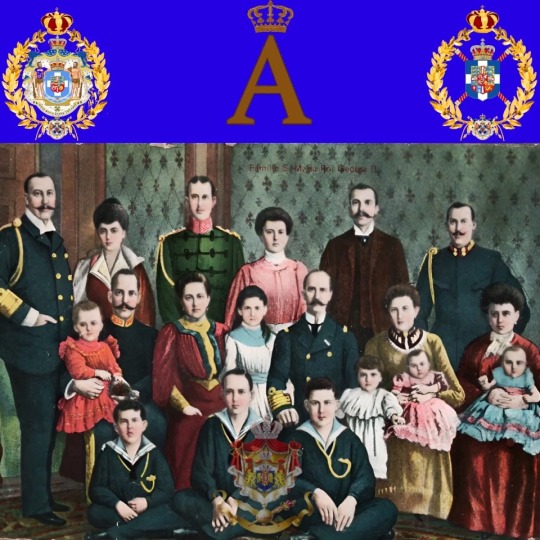

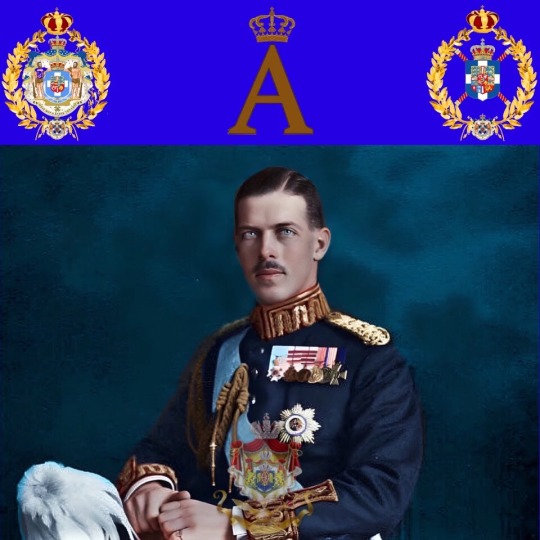



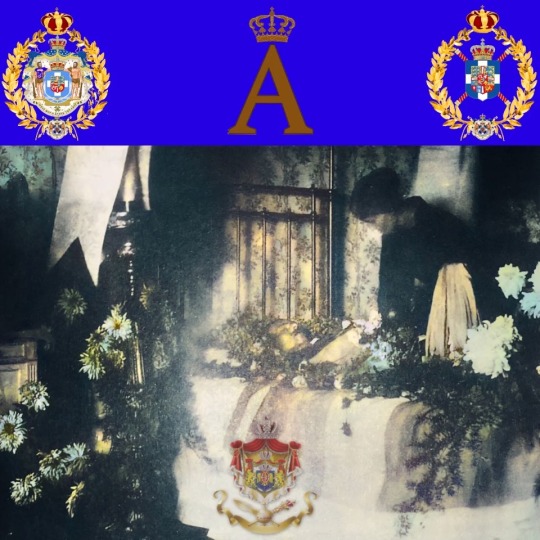

The 25th of October is 103 years since the death of HM King Alexander I of Hellenes (1 August 1893 – 25 October 1920)
Alexander was King of Greece from 11 June 1917 until his death in 1920.
The second son of King Constantine I, Alexander was born in the summer palace of Tatoi on the outskirts of Athens. He succeeded his father in 1917, during World War I, after the Entente Powers and the followers of Eleftherios Venizelos pushed King Constantine and his eldest son, Crown Prince George, into exile. Having no real political experience, the new king was stripped of his powers by the Venizelists and effectively imprisoned in his own palace. Venizelos, as prime minister, was the effective ruler with the support of the Entente. Though reduced to the status of a puppet king, Alexander supported Greek troops during their war against the Ottoman Empire and Bulgaria. Under his reign, the territorial extent of Greece considerably increased, following the victory of the Entente and their Allies in the First World War and the early stages of the Greco-Turkish War of 1919–1922.
Alexander controversially married the commoner Aspasia Manos in 1919, provoking a major scandal that forced the couple to leave Greece for several months.
The government allowed the couple to return to Greece in mid-1920. Although their marriage was legalized, Aspasia was not recognized as queen, but was instead known as "Madame Manos".At first, she stayed at her sister's house in the Greek capital before transferring to Tatoi,and it was during this period that she became pregnant with Alexander's child.
Alexander's daughter by Aspasia Manos, Alexandra , was born five months after his death. Initially, the government took the line that since Alexander had married Aspasia without the permission of his father or the church, his marriage was illegal and his posthumous daughter was illegitimate. However, in July 1922, Parliament passed a law which allowed the King to recognize royal marriages retroactively on a non-dynastic basis.That September King Constantine I —at Sophia's insistence—recognized his son's marriage to Aspasia and granted her the style of "HRH Princess Alexander of Hellenes Princess of Denmark ".Her daughter (Constantine I's granddaughter) was legitimized as HRH princess of Greece and Denmark, and later married King Peter II of Yugoslavia in London in 1944. They had one child: Alexander, Crown Prince of Yugoslavia.
Alexander visited the newly acquired territories of West Thrace, and on 8 July 1920 the new name for the region's main town—Alexandroupoli (meaning "city of Alexander" in Greek)—was announced in the king's presence. The city's previous name of Dedeagatch was considered too Turkish
On 2 October 1920, Alexander was injured while walking through the grounds of the Tatoi estate. A domestic Barbary macaque belonging to the steward of the palace's grapevines attacked or was attacked by the king's German Shepherd dog, Fritz,and Alexander attempted to separate the two animals. As he did so, another monkey attacked Alexander and bit him deeply on the leg and torso. Eventually servants arrived and chased away the monkeys,and the king's wounds were promptly cleaned and dressed but not cauterized. He did not consider the incident serious and asked that it not be publicized.
That evening, his wounds became infected; he developed a strong fever and sepsis set in. His doctors considered amputating his leg, but none wished to take responsibility for so drastic an act. On 19 October, he became delirious and called out for his mother, but the Greek government refused to allow her to re-enter the country from exile in Switzerland, despite her own protestations. Finally, the queen dowager, Olga, George I's widow and Alexander's grandmother, was allowed to return alone to Athens to tend to the king. She was delayed by rough waters, however, and by the time she arrived, Alexander had already died of sepsis twelve hours previously at a little after 4 p.m. on 25 October 1920.The other members of the royal family received the news by telegram that night.
Two days later, Alexander's body was conveyed to Athens Cathedral, where it lay in state until his funeral on 29 October. Once again, the royal family were refused permission to return to Greece, and Queen Olga was the only member who attended.Foreign powers were represented by the Prince Regent of Serbia with his sister Princess Helen wife of John Constantinovich of Russia, the Crown Prince of Sweden with his uncle Prince Eugene, Duke of Nericia, and Rear-Admirals Sir George Hope of the United Kingdom and Dumesnil of France, as well as members of the Athens diplomatic corps.
After the cathedral service, Alexander's body was interred on the grounds of the royal estate at Tatoi.The Greek royal family never regarded Alexander's reign as fully legitimate. In the royal cemetery, while other monarchs are given the inscription "King of the Hellenes, Prince of Denmark", Alexander's reads "Alexander, son of the King of the Hellenes, Prince of Denmark. He ruled in the place of his father from 14 June 1917 to 25 October 1920."According to Alexander's favorite sister, Queen Helen of Romania, this feeling of illegitimacy was also shared by Alexander himself, a sentiment that helps explain his mésalliance with Aspasia Manos
Την 25η Οκτωβρίου συμπληρώνονται 103 χρόνια από τον θάνατο του βασιλιά των Ελλήνων Αλέξανδρου Α΄ (1 Αυγούστου 1893 – 25 Οκτωβρίου 1920)
Ο Αλέξανδρος ήταν βασιλιάς της Ελλάδας από τις 11 Ιουνίου 1917 μέχρι το θάνατό του το 1920.
Ο δεύτερος γιος του βασιλιά Κωνσταντίνου Α΄, ο Αλέξανδρος γεννήθηκε στο θερινό ανάκτορο του Τατοΐου στα περίχωρα της Αθήνας. Διαδέχτηκε τον πατέρα του το 1917, κατά τη διάρκεια του Α' Παγκοσμίου Πολέμου, αφού οι δυνάμεις της Αντάντ και οι οπαδοί του Ελευθέριου Βενιζέλου ώθησαν στην εξορία τον βασιλιά Κωνσταντίνο και τον μεγαλύτερο γιο του, τον διάδοχο Γεώργιο. Μη έχοντας πραγματική πολιτική εμπειρία, ο νέος βασιλιάς αφαιρέθηκε από τις εξουσίες του από τους βενιζελικούς και ουσιαστικά φυλακίστηκε στο παλάτι. Ο Βενιζέλος, ως πρωθυπουργός, ήταν ο αποτελεσματικός ηγεμόνας με την υποστήριξη της Αντάντ. Αν και περιορίστηκε στο καθεστώς ενός βασιλιά-μαριονέτα, ο Αλέξανδρος υποστήριξε τα ελληνικά στρατεύματα κατά τη διάρκεια του πολέμου τους εναντίον της Οθωμανικής Αυτοκρατορίας και της Βουλγαρίας. Επί της βασιλείας του, η εδαφική έκταση της Ελλάδας αυξήθηκε σημαντικά, μετά τη νίκη της Αντάντ και των Συμμάχων της στον Πρώτο Παγκόσμιο Πόλεμο και τα πρώτα στάδια του ελληνοτουρκικού πολέμου του 1919-1922.
Ο Αλέξανδρος παντρεύτηκε αμφιλεγόμενα την απλοϊκή Ασπασία Μάνο το 1919, προκαλώντας ένα μεγάλο σκάνδαλο που ανάγκασε το ζευγάρι να εγκαταλείψει την Ελλάδα για αρκετούς μήνες.
Η κυβέρνηση επέτρεψε στο ζευγάρι να επιστρέψει στην Ελλάδα στα μέσα του 1920. Αν και ο γάμος τους νομιμοποιήθηκε, η Ασπασία δεν αναγνωρίστηκε ως βασίλισσα, αλλά ήταν γνωστή ως «Μαντάμ Μάνος». Στην αρχή, έμεινε στο σπίτι της αδερφής της στην ελληνική πρωτεύουσα πριν μετακομίσει στο Τατόι, και την περίοδο αυτή έγινε έγκυος στο παιδί του Αλέξανδρου.
Η κόρη του Αλέξανδρου από την Ασπασία Μάνου, η Αλεξάνδρα, γεννήθηκε πέντε μήνες μετά τον θάνατό του. Αρχικά, η κυβέρνηση υιοθέτησε τη γραμμή ότι αφού ο Αλέξανδρος είχε παντρευτεί την Ασπασία χωρίς την άδεια του πατέρα του ή της εκκλησίας, ο γάμος του ήταν παράνομος και η κόρη του νόθα. Ωστόσο, τον Ιούλιο του 1922, το Κοινοβούλιο ψήφισε νόμο που επέτρεπε στον Βασιλιά να αναγνωρίζει αναδρομικά τους βασιλικούς γάμους σε μη δυναστική βάση. Εκείνο τον Σεπτέμβριο,ο Κωνσταντίνος —με την επιμονή της Σοφίας— αναγνώρισε το γάμο του γιου του με την Ασπασία και της παραχώρησε το στυλ "ΑΒΥ Πριγκίπισσα Αλέξανδρου των Ελλήνων Πριγκίπισσα της Δανίας". Η κόρη της (η εγγονή του Κωνσταντίνου Α') νομιμοποιήθηκε ως ΑΒΥ πριγκίπισσα της Ελλάδας και της Δανίας και αργότερα παντρεύτηκε τον βασιλιά Πέτρο Β' της Γιουγκοσλαβίας στο Λονδίνο το 1944. Απέκτησαν ένα παιδί: τον Αλέξανδρο, διάδοχο της Γιουγκοσλαβίας.
Ο Αλέξανδρος επισκέφθηκε τα πρόσφατα αποκτηθέντα εδάφη της Δυτικής Θράκης και στις 8 Ιουλίου 1920 το νέο όνομα για την κύρια πόλη της περιοχής —Αλεξανδρούπολη (που σημαίνει «πόλη του Αλεξάνδρου» στα ελληνικά)— ανακοινώθηκε παρουσία του βασιλιά. Το προηγούμενο όνομα της πόλης Dedeagatch θεωρήθηκε πολύ τουρκικό
Στις 2 Οκτωβρίου 1920, ο Αλέξανδρος τραυματίστηκε ενώ περπατούσε στους χώρους του κτήματος Τατοΐου. Ένας οικόσιτος μακάκος Barbary που ανήκε στον οικονόμο των αμπελιών του παλατιού επιτέθηκε ή δέχθηκε επίθεση από τον Γερμανικό Ποιμενικό σκύλο του βασιλιά, Φριτς, και ο Αλέξανδρος προσπάθησε να χωρίσει τα δύο ζώα. Καθώς το έκανε, μια άλλη μαϊμού επιτέθηκε στον Αλέξανδρο και τον δάγκωσε βαθιά στο πόδι και τον κορμό. Τελικά έφτασαν υπηρέτες και έδιωξαν τους πιθήκους, και οι πληγές του βασιλιά καθαρίστηκαν και ντύθηκαν αμέσως, αλλά δεν καυτηριάστηκαν. Δεν θεώρησε το περιστατικό σοβαρό και ζήτησε να μην δημοσιοποιηθεί.
Εκείνο το βράδυ, οι πληγές του μολύνθηκαν. ανέπτυξε δυνατό πυρετό και εμφανίστηκε σήψη. Οι γιατροί του σκέφτηκαν να ακρωτηριάσουν το πόδι του, αλλά κανένας δεν ήθελε να αναλάβει την ευθύνη για μια τόσο δραστική πράξη. Στις 19 Οκτωβρίου, παραληρούσε και φώναξε τη μητέρα του, αλλά η ελληνική κυβέρνηση αρνήθηκε να της επιτρέψει να ξαναμπεί στη χώρα από την εξορία στην Ελβετία, παρά τις δικές της διαμαρτυρίες. Τελικά, η κηδεμόνα της βασίλισσας, Όλγας, χήρα του Γεωργίου Α' και γιαγιά του Αλέξανδρου, επετράπη να επιστρέψει μόνη στην Αθήνα για να φροντίσει τον βασιλιά. Ωστόσο, καθυστέρησε από τα ταραγμένα νερά, και όταν έφτασε, ο Αλέξανδρος είχε ήδη πεθάνει από σήψη δώδεκα ώρες πριν, λίγο μετά τις 4 μ.μ. στις 25 Οκτωβρίου 1920. Τα άλλα μέλη της βασιλικής οικογένειας έλαβαν τα νέα με τηλεγράφημα εκείνο το βράδυ.
Δύο ημέρες αργότερα, η σορός του Αλέξανδρου μεταφέρθηκε στον Καθεδρικό Ναό Αθηνών, όπου παρέμεινε στην κατάσταση μέχρι την κηδεία του στις 29 Οκτωβρίου. Για άλλη μια φορά, η βασιλική οικογένεια αρνήθηκε να επιστρέψει στην Ελλάδα και η βασίλισσα Όλγα ήταν το μόνο μέλος που παρευρέθηκε. Οι ξένες δυνάμεις εκπροσωπήθηκαν από τον Πρίγκιπα Αντιβασιλέα της Σερβίας με την αδελφή του Πριγκίπισσα Ελένη, σύζυγο του Ιωάννη Κωνσταντίνοβιτς της Ρωσίας, τον διάδοχο της Ρωσίας Σουηδία με τον θείο του Πρίγκιπα Ευγένιο, Δούκα της Νερίσιας, και τους Αντιναύαρχους Sir George Hope του Ηνωμένου Βασιλείου και Dumesnil της Γαλλίας, καθώς και μέλη του διπλωματικού σώματος της Αθήνας.
Μετά τη λειτουργία του καθεδρικού ναού, η σορός του Αλεξάνδρου ενταφιάστηκε στο βασιλικό κτήμα στο Τατόι. Η ελληνική βασιλική οικογένεια ποτέ δεν θεώρησε τη βασιλεία του Αλεξάνδρου ως απολύτως νόμιμη. Στο βασιλικό νεκροταφείο, ενώ σε άλλους μονάρχες δίνεται η επιγραφή «Βασιλιάς των Ελλήνων, Πρίγκιπας της Δανίας», του Αλεξάνδρου γράφει «Αλέξανδρος, γιος του Βασιλιά των Ελλήνων, Πρίγκιπας της Δανίας. Κυβέρνησε στη θέση του πατέρα του από το 14 Ιουνίου 1917 έως 25 Οκτωβρίου 1920.
#kingconstantine#danishroyalfamily#crownprincepavlos#queenannemarie#greek royal family#house of romanov#greekroyals#crownprincessmariechantal#danishroyals#princeconstantinealexios
2 notes
·
View notes
Photo
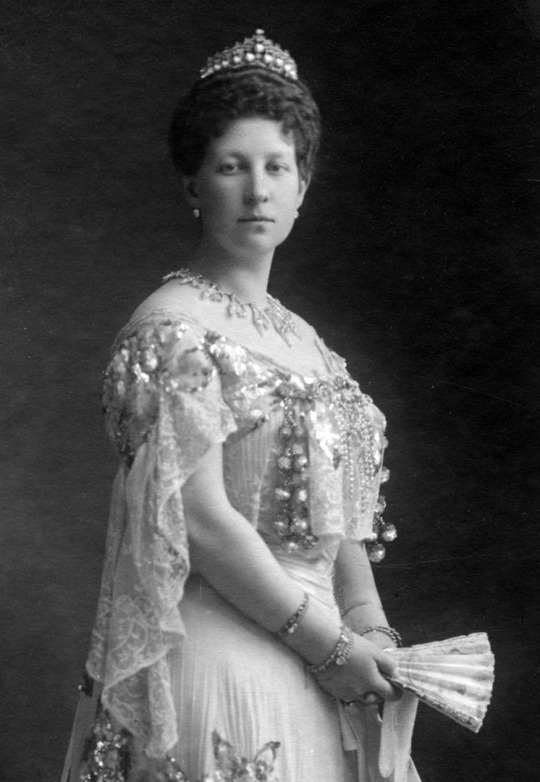
Princess Maria of Greece and Denmark (3 March 1876 – 14 December 1940) was a daughter of King George I of Greece and his wife Grand Duchess Olga Constantinovna of Russia. She was a sister of King Constantine I of Greece and a first cousin of Tsar Nicholas II of Russia.
Born as a princess of Greece and Denmark, she was educated in Athens by private tutors. Her father instilled in her a great love for Greece and throughout her life, she remained a fervent patriot. She married Grand Duke George Mikhailovich of Russia, her first cousin once removed, who courted her for five years. The wedding took place in 1900 in Corfu. The couple settled in St. Petersburg and they had two daughters: Princesses Nina (1901 -1974) and Xenia of Russia (1903 -1965).
Grand Duke George Mikhailovich had a house built for her in Crimea and he was a devoted father and husband, but the marriage was unhappy. Princess Maria, known upon her marriage as Grand Duchess Maria Georgievna of Russia, neither got to love her husband nor her adopted country. Longing for her native Greece, she never adapted to life in Russia. Over the years, she became estranged from her husband taking any opportunity to spend time abroad. At the outbreak of World War I, she was vacationing in England with her daughters and chose not to return to Russia. During the conflict, she was a patron of three military hospitals in Harrogate, which she financed generously.
Her husband was trapped in Russia after the revolution and he was shot by the Bolsheviks with several other Romanov relatives in January 1919. In her widowhood, deprived of her Russian income, Princess Maria faced serious financial difficulties. She returned to live in Greece with her daughters in 1920. There, she began a relationship with Admiral Perikles Ioannidis, who had been the commander of the ship that she took at her return to Athens. They were married in 1922. The proclamation of the Second Hellenic Republic in 1924, sent her into exile. The princess returned to live in Britain for a couple of years and she settled in Rome in 1926 with her second husband. She lived in Italy for over a decade until the outbreak of the Greco-Italian War in 1940 forced her to return to her native Greece. She was in poor health and was cared for by her nephew King Paul of Greece and his wife Frederica. She died, as the Greek royal family was about to leave for exile. She left a book of memoirs, published posthumously by her grandchildren with the title A Romanov Diary.
#Maria of Greece and Denmark#House Glücksburg#XIX century#XX century#people#portrait#photo#photography#Black and White
8 notes
·
View notes
Note
I understand that the greek royals are "family" but idk sometimes its just so disrespectful. I kind of side eye Daisy for allowing them to use titles when the government and people have repeatedly asked them to stop.
Like i remember reading how the President of Greece once declined an invitation to Charles and Diana's wedding bc Constantine had been invited as "King of the Hellenes" and its like I understand royals and their annoying entitlement but it really goes too far.
Their spots and other deposed royal spots could've been given to someone else 🤷♀️
Yeah I definitely feel the same. I also understand the other side of it which is that not inviting them causes more of a problem optics wise and with MC and her reputation. I wouldn't want to get on her bad side, best believe if they weren't invited she would have made it a thing.
3 notes
·
View notes
Text

Remembering His Majesty King Constantine of the Hellenes.
Constantine II (2 June 1940 – 10 January 2023) was the last King of Greece, reigning from 1964 to 1974. After the 1974 referendum and proclamation of the Republic, the King and his family resided in the United Kingdom until 2013.
As the only son of King Paul I and Queen Frederica, Constantine II was proclaimed King of the Hellenes on 6 March 1964 at the age of 24, succeeding his father King Paul I, the first cousin of HRH Prince Philip of Greece, the Duke of Edinburgh.
He served in all three branches of the Hellenic Armed Forces and attended the National and Kapodistrian University of Athens Law School.
He had two sisters, Queen Sofía of Spain (tenure: 1975–2014) and Princess Irene.
In 1964, he married Princess Anne-Marie, the youngest daughter of King Frederik IX of Denmark, with whom he had five children: Princess Alexia, Crown Prince Pavlos, Prince Nikolaos, Princess Theodora, and Prince Philippos.
He was an Olympic sailing champion, winning gold at the Rome 1960 Olympic Games, and served as both President of the Hellenic Olympic Committee and an honorary member of the International Olympic Committee.
In 2013, King Constantine II returned to permanently reside in Greece. He passed away in the city of his birth, Athens, on 10 January 2023 and was buried privately in the Royal Cemetery at Tatoi.
Defined by an absolute respect for the Greek people and by a deeply-held love for his country, King Constantine II was ever faithful and resolute in his service to Greece, employing all means at his disposal throughout his life to this end.
Photo: Nikolas Kominis/Studio Kominis.
#His Majesty King Constantine of the Hellenes#King Constantine II#greek royal family#His Serene Highness The Count of Münnich and Reutern#Royal Cousin#Son Altesse Sérénissime le Prince Joshua Comte de Münnich et Reutern#Son Altesse Sérénissime le Comte de Münnich et Reutern#The Count of Münnich and Reutern#Count Joshua von Münnich-Reutern#Count Joshua of Munnich-Reutern#Son Altesse Sérénissime le Prince de Münnich et Reutern#Seine Durchlaucht Joshua Graf von Münnich und Reutern#Seine Durchlaucht Fürst Joshua Graf von Münnich und Reutern#The Count of Münnich#HSH The Count of Münnich-Reutern#Hans Højhed Greven af Münnich og Reutern#Hans Højhed Greven Joshua af Münnich og Reutern#Hans Højhed Prins Joshua Greven af Münnich og Reutern#Comte Joshua de Münnich et Reutern#Джошуа граф фон Миних-Рейтерн#Граф Миних-Рейтерн
1 note
·
View note
Photo

Bulgaria's Historical Struggles and Expansion
Conflict with Byzantium (679 A.D.)
At this time, Hellenic Byzantium was occupied with battles against the Arabs. In 679, the Byzantine emperor Constantine II waged war against the Old Bulgarians. Unfortunately, Constantine’s army suffered a severe defeat, and he had to sign a peace treaty, acknowledging the Bulgarian khan’s authority and surrendering all the land that makes up present-day Bulgaria.
Fusion of Slavs and Old Bulgarians
The blending of Slavs and Old Bulgarians into a united people called Bulgarians continued. They expanded south into Thrace and Macedonia and west along the Danube basin into Central Europe.
Conflict with Byzantium (811-813 A.D.)
In 811, the Byzantine emperor Nicephorus I City Tour Istanbul, concerned about the growing power of the Bulgarians, led an army into Bulgaria. The expedition ended in disaster, with the emperor killed and his army defeated. In 813, the new Byzantine emperor, Michael, launched a stronger attack on the Bulgarians. The Byzantines suffered a significant defeat, and surviving soldiers found safety only within the walls of Byzantium. King Krum of Bulgaria then besieged Byzantium, but when Krum fell ill and died, the Bulgarians withdrew after securing a promise of an annual tribute from Byzantium.
The Golden Age
Reign of King Boris I (865 A.D.)
King Boris I, a crucial Bulgarian ruler, accepted the Byzantine form of Christianity as the official Bulgarian religion in 865. However, tensions and conflicts with Byzantium persisted. Byzantium aimed to Hellenize and assimilate the Bulgarians into their culture, using peaceful means like making Greek the language of the church and state. However, two brothers, Cyril and Methodius, developed an alphabet for the Old Bulgarian language, known today as “Cyrillic.” King Boris I supported the spread of Cyrillic, allowing the Old Bulgarian language to compete with Greek in church rituals and ecclesiastical literature. Cyrillic later extended beyond Bulgaria, reaching other Slavic countries such as Serbia and Russia.
0 notes
Photo

Bulgaria's Historical Struggles and Expansion
Conflict with Byzantium (679 A.D.)
At this time, Hellenic Byzantium was occupied with battles against the Arabs. In 679, the Byzantine emperor Constantine II waged war against the Old Bulgarians. Unfortunately, Constantine’s army suffered a severe defeat, and he had to sign a peace treaty, acknowledging the Bulgarian khan’s authority and surrendering all the land that makes up present-day Bulgaria.
Fusion of Slavs and Old Bulgarians
The blending of Slavs and Old Bulgarians into a united people called Bulgarians continued. They expanded south into Thrace and Macedonia and west along the Danube basin into Central Europe.
Conflict with Byzantium (811-813 A.D.)
In 811, the Byzantine emperor Nicephorus I City Tour Istanbul, concerned about the growing power of the Bulgarians, led an army into Bulgaria. The expedition ended in disaster, with the emperor killed and his army defeated. In 813, the new Byzantine emperor, Michael, launched a stronger attack on the Bulgarians. The Byzantines suffered a significant defeat, and surviving soldiers found safety only within the walls of Byzantium. King Krum of Bulgaria then besieged Byzantium, but when Krum fell ill and died, the Bulgarians withdrew after securing a promise of an annual tribute from Byzantium.
The Golden Age
Reign of King Boris I (865 A.D.)
King Boris I, a crucial Bulgarian ruler, accepted the Byzantine form of Christianity as the official Bulgarian religion in 865. However, tensions and conflicts with Byzantium persisted. Byzantium aimed to Hellenize and assimilate the Bulgarians into their culture, using peaceful means like making Greek the language of the church and state. However, two brothers, Cyril and Methodius, developed an alphabet for the Old Bulgarian language, known today as “Cyrillic.” King Boris I supported the spread of Cyrillic, allowing the Old Bulgarian language to compete with Greek in church rituals and ecclesiastical literature. Cyrillic later extended beyond Bulgaria, reaching other Slavic countries such as Serbia and Russia.
0 notes
Photo

Bulgaria's Historical Struggles and Expansion
Conflict with Byzantium (679 A.D.)
At this time, Hellenic Byzantium was occupied with battles against the Arabs. In 679, the Byzantine emperor Constantine II waged war against the Old Bulgarians. Unfortunately, Constantine’s army suffered a severe defeat, and he had to sign a peace treaty, acknowledging the Bulgarian khan’s authority and surrendering all the land that makes up present-day Bulgaria.
Fusion of Slavs and Old Bulgarians
The blending of Slavs and Old Bulgarians into a united people called Bulgarians continued. They expanded south into Thrace and Macedonia and west along the Danube basin into Central Europe.
Conflict with Byzantium (811-813 A.D.)
In 811, the Byzantine emperor Nicephorus I City Tour Istanbul, concerned about the growing power of the Bulgarians, led an army into Bulgaria. The expedition ended in disaster, with the emperor killed and his army defeated. In 813, the new Byzantine emperor, Michael, launched a stronger attack on the Bulgarians. The Byzantines suffered a significant defeat, and surviving soldiers found safety only within the walls of Byzantium. King Krum of Bulgaria then besieged Byzantium, but when Krum fell ill and died, the Bulgarians withdrew after securing a promise of an annual tribute from Byzantium.
The Golden Age
Reign of King Boris I (865 A.D.)
King Boris I, a crucial Bulgarian ruler, accepted the Byzantine form of Christianity as the official Bulgarian religion in 865. However, tensions and conflicts with Byzantium persisted. Byzantium aimed to Hellenize and assimilate the Bulgarians into their culture, using peaceful means like making Greek the language of the church and state. However, two brothers, Cyril and Methodius, developed an alphabet for the Old Bulgarian language, known today as “Cyrillic.” King Boris I supported the spread of Cyrillic, allowing the Old Bulgarian language to compete with Greek in church rituals and ecclesiastical literature. Cyrillic later extended beyond Bulgaria, reaching other Slavic countries such as Serbia and Russia.
0 notes
Text
Treat Your S(h)elf: Gates of Fire by Steven Pressfield (1998)
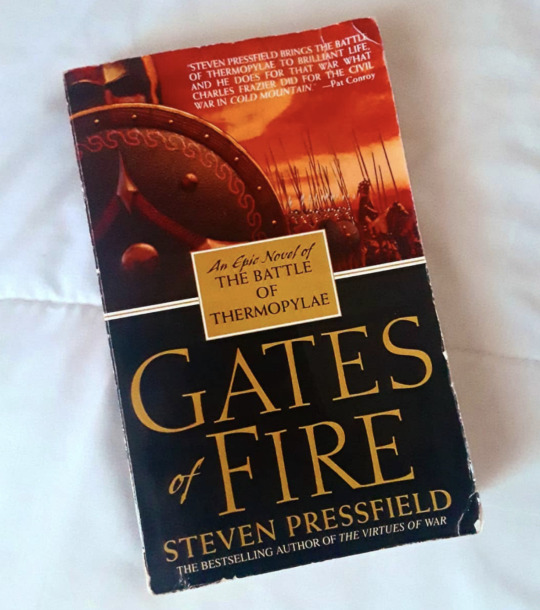
At Thermopylae, a rocky mountain pass in northern Greece, the feared and admired Spartan soldiers stood three hundred strong. Theirs was a suicide mission, to hold the pass against the invading millions of the mighty Persian army.
Day after bloody day they withstood the terrible onslaught, buying time for the Greeks to rally their forces. Born into a cult of spiritual courage, physical endurance, and unmatched battle skill, the Spartans would be remembered for the greatest military stand in history–one that would not end until the rocks were awash with blood, leaving only one gravely injured Spartan squire to tell the tale….
- Steven Pressfield, Gates of Fire (1998)
This is one of my favourite books on war I’ve ever read. I took my dog-eared copy with me last year when I went with ex-military veterans friends to climb Olympus and hike around Greece. One of the places we stopped was Thermopylae - where you can still bathe in the hot springs as the ancient Spartans and Athenians did before their monumental battle with the Persians. The very recent death of the last king of Greece, King Constantine II of the Hellenes, made me think of my trip to Greece last year and of one of the books I read on that trip. I thought I might share some of my rambling thoughts I had written down at the time, and also since then, about the retelling of one historical turning point in our western civilisation that has now entered into myth.
In 1998 was the year Frank Miller’s iconic comic graphic novel 300 about the the Battle of Thermopylae – where a tiny Greek force led by 300 Spartans held out for three days against an immense Persian invasion in 480BC - was published to great critical acclaim. Zack Snyder highly stylised slick film version of Miller’s 300 defied audience and studio expectations when it stormed the box office with Spartan-like ferocity back in 2007. Its mix of ancient history, comic-book iconography and sound-bite dialogue immediately found its way into the verbal and visual lexicon of contemporary pop culture; but things could have been very different. In 1998 Miller’s publication overshadowed the publication of Steven Pressfield’s more conventional historical novel, Gates of Fire, took its name from the eponymous battlefield, Thermopylae (referred to in 300 as ‘the hot gates’).
Pressfield, an ex-Marine soldier, had worked as a screenwriter creating disposable action-movie scripts for the likes of Steven Seagal and Dolph Lundgren in the late 1980s and early 1990s before writing his first novel, The Legend of Bagger Vance, which was adapted into the Will Smith film of the same name. It too won critical acclaim and was a huge best seller. George Clooney’s film production company bought the rights and David Self (screenwriter of 13 Days and Road to Perdition) was brought in to adapt it. Bruce Willis was dying to be in it and iconic director Michael Mann signed on the direct it. Instead the film went into development hell before Snyder’s film stole a march on Mann’s version to come out first in 2007.
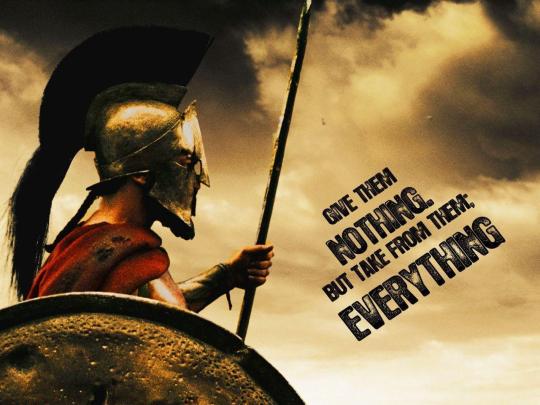
As a Classicist and ex-veteran I found Both Miller’s comic graphic novel and Snyder’s film a severe guilty pleasure. But I have to say I found reading Steven Pressfield’s brilliant novel deeply satisfying on many more levels.
The book I remember well as an American special forces chap I knew out in Afghanistan gave it to me to read because I was complaining I was fast running out of things to read between missions. I loved it.
Like a good officer I passed the book along to others in my corps - rank and file - and within a month or two it had been passed around a fair bit. It led to endless arguments about the Greeks and the Western way of war in and out of the cockpit with my brother/sister aviators and crew as well other officers and the men.
For the soldiers on the ground the book felt more visceral. As a fellow brother British infantry officer said the depictions of phalanx warfare raised his blood pressure at how well he and his men could relate. I never felt more Spartan than I did I sitting on my arse baking in the sun of Afghan red dust mornings. We all related to this story one way or another - the sand, sweat, blood, feelings of combat, and thoughts of mortality.

Most book reviewers loved the book. “Does for (Thermopylae) what Charles Frazier did for the Civil War in Cold Mountain’, enthused author Pat Conroy. The New York Times praised the book’s ‘feel of authenticity from beginning to end.’ Author Nelson DeMille admired the ‘mastery, authority and psychological insight.’ Sarah Broadhurst, in The Bookseller, particularly wanted to recommend the book to women: “ Although it has a male feel to it, it will appeal to both sexes, as my two readers and I can testify. In fact, it is a great example of the rebirth of the historical novel, which I am sure is on its way.” Where people quibbled, it was usually about the violence of some of the descriptions, or on small errors of fact. The Times called it ‘a story of blood, biffing and bonking, thigh deep in blood, terror-piss and entrails’ but acknowledged that ‘their heroism still makes the hairs at the back of the neck bristle’. The Times Literary Supplement sniped at Pressfield for confusing two different Greek cities called Argos, and for what it called ‘phallocentric discourse’, but also called the book ‘a monument to the important twentieth-century art of pace.’
The novel stands out in the way it makes everything come alive from the soldiers' training, the scenes of actual battle, and most particularly the scenes after or between battles. The discussions of fear, and of how officers and soldiers should behave are particularly poignant and also felt very real to those of us who have experienced war first hand. What I found pleasantly surprising was how well written it was with its very strong portrayals of women as secondary characters. With nearly all military books women are often relegated to the background but here I found some of the strongest depictions of women in this genre. The women don't fight in the battles, yet are courageous and compassionate, intelligent and influential.
Many readers will be familiar with the broad strokes of the story of the battle. But it’s worth recapping here for those that don’t. In 480 BC, King Xerxes lead a Persian army of between one and two million into Greece. The Spartan King Leonidas lead 300 Knights and some 700 Thespaian allies to the narrow pass at Thermopylae, in order to hold the Persians back as long as possible. They proceeded to hold the pass for 7 days. These 300 Spartans died to a man defending the pass against a force of over a million and the epitaph provided to them by the poet Simonides, "Go tell the Spartans, stranger passing by, that here obedient to their laws we lie", is perhaps the most famous in history. Their example rallied and inspired all of Greece and eventually the Persians were defeated in the naval battle at Salamis and on land at Plataea.

The story is told from the point of view of its narrator Xeones of Astakos, a helot, a slave of the Spartans, and has his own conflicted feelings about Spartan society. He is taken, wounded, before Xerxes, and asked to explain “who were these foemen, who had taken with them to the house of the dead ten or, as some reports said, as many as twenty for every one of their own fallen?” In Xeones’ own words, therefore, we get the story of his life; from when his own city is destroyed, to when he comes to Sparta as a slave, to the time when he finally comes to stand beside the Spartiate in the fateful battle. As the sole survivor among the Spartans, Xerxes wishes Xeones to tell his story to the Persian court historian Gobartes. Xeones starts with the tale of how he came to Sparta. As a youth, his village of Astakos is destroyed and his family slaughtered, but he and the cousin he loves, Diomache, escape. As they wander the countryside, Diomache is raped by soldiers and Xeones is crucified after stealing a chicken, although Diomache saves him from death. Thrown into despair, because his hands are so damaged that he can never wield a sword, Xeones heads off by himself to die. But he experiences a visitation from the Archer god Apollo Far Striker and realizes he can still wield a bow. When Diomache, who is also distraught after being violated by the soldiers, takes off, Xeones heads to Sparta where he hopes to join the army.
The middle section of the book, which is at a much slower pace, deals with his life in Sparta and the training techniques used by the Spartans to create what was one of the most formidable fighting forces the world has ever seen. Eventually he becomes the squire of one of the 300 knights who are chosen for Thermopylae.
The final section, on the battle itself, depicts wholesale slaughter accompanied by acts of ineffable courage. It also relates two of the great lines of all time. When Xerxes offers to spare the Spartans lives if they will surrender their arms, Leonidas is reputed to have snarled, "come and get them." And upon being told that the Persians have so many bowmen that the cloud of arrows would blot out the sun, one of the Spartans says, "good, then we'll have our battle in the shade."
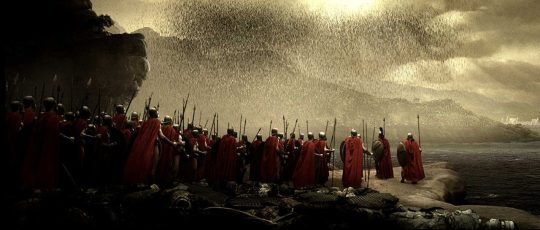
Pressfield being an ex-Marine grunt himself gives a very convincing grunt’s-eye-view of the battle and of Spartan society to create a fantastically blood pumping engaging tale. Pressfield sets himself the task of explaining Spartan culture to us in all its glory, humour, brutality and philosophy. To do so, he draws on his personal experience as a US infantryman, as well being strongly versed in Classics. The result is a fascinating tale, on one level a war story written with great pace and excitement, on another a ruminative tale of man’s capacity for honour, heroism, and self-sacrifice.
As a Classicist (since confirmed by Pressfield in many interviews) he makes excellent use of the ancient historical sources (such as they are). The most useful sources seem to be Herodotus first, his pages about the battle. Plutarch’s Lives of various Spartans — Lycurgus, Agesilaus, Lysander, etc - can be discerned strongly as the section of his Moralia called Sayings of the Spartans and Sayings of the Spartan Women. Xenophon of course was the best contemporaneous eyewitness to real Spartan society. Constitution of the Lacedaemonians, the Cyropaedia and even the Anabasis greatly help Pressfield pepper history with authentic detail. Diodorus’ version of the battle added the thought of the night raid (which The 300 Spartans also had) and Pressfield takes that from him. Pressfield has said that he didn’t consult recent archaeology, other than going to Sparta myself and checking out the ruins of Artemis, Orthia and so forth.
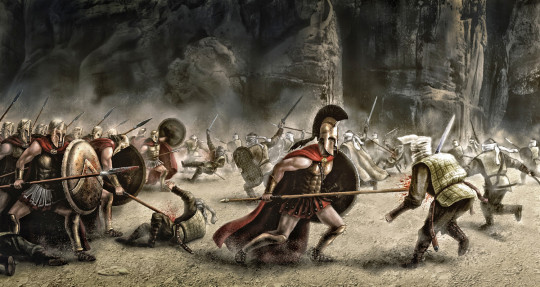
But still huge gaps remained. This is where Pressfield the ex-Marine and the well educated novelist come together. There was much detail that he needed to consciously to make up and make it sound plausible and even true. For instance, the concept of phobologia, the Science of Fear. That’s completely invented, yet Pressfield, as a Marine veteran, absolutely felt certain the Spartans, like every other warrior race, must have had something like that, a religious-philosophical doctrine of warfare understanding the principles of their culture, probably a sort of cult-like initiatory situation.
Pressfield in one interview admitted that the speech that Alexandros recites holding his shield — “This is my shield, I bear it before me into battle, etc.” — was a fictional invention based upon his own experience in the US Marine Corps, where Marines recite, “This is my rifle. There are many other like it, but this one is mine, etc.” Another huge fictional detail that he made central to the story was the prominence of the squire in hoplite battle. Again he based this on pure instinct and common sense. He thought the relationship must be much like that of a professional golfer to his caddie. Pressfield firms believes that the bonds formed between man and batman in the course of bloody warfare must have been intimate on a level second only to husband and wife, and maybe more intimate. The ancient sources make nothing of this, because they just passed it over as obvious, but I fully agree with Pressman. It’s an inspired insight. The fact that squires and armour bearers voluntarily stayed to die at Thermopylae says volumes. (Also a squire was the perfect fly-on-the-wall narrator, like Midshipman Byam in Mutiny on the Bounty.) Further I could not imagine that squires would stand idly by, watching their men fight. They must have served as auxiliaries, not only dashing in and out of the field evacuating the wounded, but getting in their blows as light infantrymen whenever they could. I suspect that, as prominent as Pressfield made their roles in Gates, if we could beam ourselves back and witness actual ancient battle, the part of the squire/auxiliary was even bigger than one might imagine.

The book then is not merely about the immortal stand at Thermopylae but delves into the Spartan lifestyle, how they achieved such military cohesion, how they viewed themselves and the world, what made them willing to march off to a suicide mission — it’s one thing to find oneself in such a situation, it’s quite another to jockey to be chosen for it, to know days ahead of time that this is it, you’re heading to your death and to do it unflinchingly. It’s about what binds men together in a group — what makes them willing to die for others. I think Dienekes’ thoughtful analysis of fear and how the opposite of fear isn’t bravery but love, tells it all. Love of a messmate, a family, a city.
Indeed as Pressfield shows the spartans would carry their shields on the left side of their body which allowed them to cover the blind spot of the warrior fighting next to them. Commanders would arrange it so that family members and friends were placed next to each other within the formation. The belief was that warriors would be less likely to abandon their comrades if they were fighting next to someone they deeply cared about. Love conquers fear.
Now the story isn’t perfect, there are some pacing issues when the plot seems to go extra slow, and there are time jumps that can feel a bit awkward. Some periods of our main protagonist’s life, that would be interesting, are just skipped.
In my opinion, the book balances fiction and facts quite nicely, not making the Spartans some over the top super heroes, like the movie “300” did.
The thing that I liked the most is the whole theme of the book: honour, the duty to your city and people, and the strength of the mind. The Spartans didn’t see war as a fun way of killing people, it was an inevitable fact of life. They didn’t kill fear, they learned to embrace it, keep it locked until the very last moment.
Now it’s a bit harder to judge characters in a book like this because some of them are based on real people and some of them are fictional. But what I will say is that these people feel real, grounded to the situation they are in.
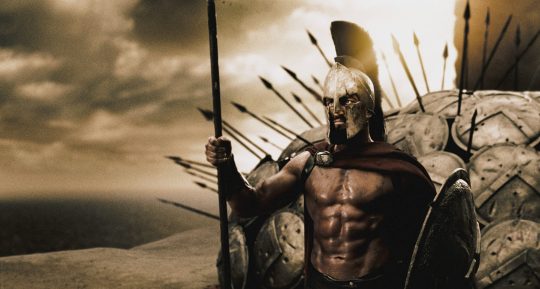
I was very taken by the portrayal of Leonidas, the Spartan king who commanded at Thermopylae. One of the most stirring speeches in the book is addressed to Xerxes, the King of Persia, and contrasts Xerxes with Leonidas: "I will tell His Majesty what a king is. A king does not abide within his tent while his men bleed and die upon the field. A king does not dine while his men go hungry, nor sleep when they stand at watch upon the wall. A king does not command his men's loyalty through fear nor purchase it with gold; he earns their love by the sweat of his back and the pains he endures for their sake….”
I also appreciated the inclusion of the women of Sparta — no shirkers themselves. They would be the first ones out shaming the men into doing their duty for their city (and that’s what it was all about for these people — the survival of the city first) if that was what was needed. I have to say I shed a tear when Leonidas confessed his criteria for selection of the 300. So much is said about Spartan men but the women kicked ass in a time and place where women were almost never seen and certainly never heard from. The first female Olympic champion was a Spartan princess called Kynisca, in 392 BC. She was also the first woman to become a champion horse trainer when her horses and chariot competed and won in the Ancient Olympic Games. Twice.
Arete is in some ways the most powerful character in the book. She is very well written. She just popped forth, full-grown from the brow of Zeus. I liked her a lot. Whether or not Sparta was a “good” place for women I can’t say. Certainly it would be fascinating as hell to beam back there and see, for real, how they lived and what they were like. It seems likely Pressfield drew inspiration of Arete from Plutarch’s Sayings of the Spartan Women. These, if you’ve ever read them, are unbelievably hard-core. For example, here’s one: A messenger returns from a battle to inform a Spartan mother (Plutarch gives her name but I’ve forgotten it) that all five of her sons have just perished honourably fighting the enemy. She asks this only: “Were we victorious?” The courier replies yes. “Then I am happy,” says the mother and turns for home. Here’s another: A messenger returns from another battle to tell another mother that one of her sons has been killed, facing the enemy. “He is my son,” she says. Her other son, the messenger continues, is still alive but ran from the enemy. “He is not my son,” she replies. Pressfield doesn’t see Arete quite that hard-core but certainly someone tough as nails who imbibed the Spartan mythos even more than the men and lived it. Pressfield admits in one of his interviews that this was all instinct, he could be wrong, but itt just was what felt right to him.

Before I had gone through Sandhurst after university I didn’t really condone crude language or lewd humour but it’s one of the ways that my stint in the army and especially out on a battlefield deployment changed me a little. I confess that I loved the sometimes crude humour - they’re soldiers in a time of war and you do or say whatever will get you through. Battle (especially foxhole) humour has a dark gallows feel and it’s entirely acceptable and authentic - just ask any veteran of any war. The battle descriptions are graphic - very graphic but not much worse than what’s in the Iliad. And we are talking about a battle in which thousands died by sword, spear, arrow and other various messy methods.
I also enjoyed how the book has a pleasing prose aesthetic that imitates the style of Homer. For the non-Classicist it may take a little bit of getting used to and slow down their reading but it sounds melodious to the ear.
Overall Pressman gives us a pulsating story in which the characters are not either super evil villains that cartoonishly want to “take over the world” or superheroes that can’t make mistakes. The author doesn’t take a side in this story, war is war, and people are people. They make mistakes, get angry or jealous, they do bad things in the name of good and vice versa. The book is not about good and evil, it’s about how different people and cultures understand the order, stability, good and even our minds and dreams. The enemies here aren’t some sort of Oriental magic freaks from far away lands, they are just men made in flesh and blood. Sure wanting to control more land or have more people serving them, but that’s everyone I know in the history of rise and fall of civilisations.

Was the Spartan defence of the Hot Gates worth it?
Clearly, yes. Cultures, if not civilisations, are nearly always rubbing up against each other and even clashing where they can’t bridge differences. I think Pressfield has it right when he said, “What the defence meant to me was this: its significance was metaphorical rather than literal. We are all in a battle that will end with our deaths and, like the Spartans at Thermopylae, we know it. The question is how do we deal with it. They answered by being true to their calling, to their brothers and sisters, and to their ideals. Early in the book there’s a passage where the Persian historian is narrating; he’s speaking of King Xerxes and his interest in the fallen Spartans. Xerxes says of them: “He knew they feared death, as all men. By what philosophy did their minds embrace it?”
In two of my favourite passages, Pressfield has his protagonist explain why sacrifice is so beautiful to the Greeks (or to anyone who has honour), "In one way only have the gods permitted mortals to surpass them. Man may give that which the gods cannot, all he possesses, his life”. This is a very profoundly moving insight.
Pressfield goes further and tries to answer a much deeper question as to why men fight and perhaps this is where it’s the ex-Marine and not the novelist in Pressfield who is talking, "Forget country. Forget king. Forget wife and children and freedom. Forget every concept, however noble, that you imagine you fight for here today. Act for this alone: for the man who stands at your shoulder."
Amen to that.
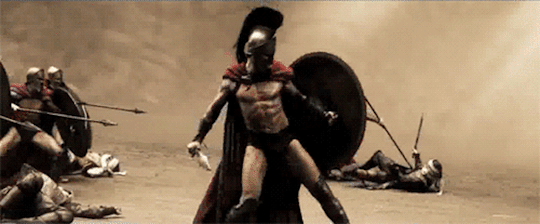
At the end of the book, I would have probably stranded there fighting side by side with them against the Persians. Because at that point, they were my friends, comrades, and heroes. It was when I put the book down that I realised that I already had the humble privilege of serving with my fellow brother and sister officers and soldiers of whom all were comrades, many were friends, and a few were unspoken heroes.
Does the battle of Thermopylae provide any lessons to us?
That is harder to discern because it depends on what values we already hold dear. Sparta was a small, compact, basically tribal society where every citizen (forgetting about the helots for the time being) was vitally needed and where warfare was hand-to-hand and absolutely communal, with your own brothers, uncles, father and friends fighting beside you, so if you acted the coward, there was no hiding it. The modern world of anonymity, mass culture, commercialism, shamelessness, indulgence of sensual desires, worship of money couldn’t be farther. The Spartan society is like a culture from the moon.

On an individual and interior basis, I think, can we take lessons that might help us. Self-discipline, loyalty, grit, hard work, perseverance, honour, humility, respect, and compassion.
On a societal level Spartans were not selfish and didn’t worship the cult of individualism as we do today. It was all about the group. In our age when civil strife, economic hardship, and effects of a unrelenting pandemic erode our trust in our political and civil institutions and set neighbour against neighbour because of the political or religious beliefs they might hold, the only thing we have left to fall back on is just our individual selves. It’s every man for himself. The Spartans would balk at such selfish individualism. The strength (and ultimately the effectiveness) of the Spartan phalanx was encapsulated in the “next man up” approach. If a warrior was injured or killed on the outer edge of the formation, the next man behind them would step up and take their place. The integrity of the group’s formation was protected at all costs, because without the strength of the phalanx to protect them, each man on had little chance of surviving the battle on his own. In a real sense, they had each other’s backs. They had the cohesion of a collective spirit. They were in it for each other together.
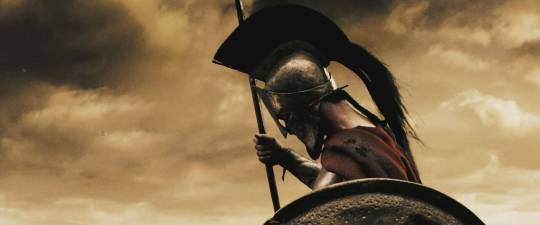
It’s not a bad thing in this day and age to be a little bit “spartan,” don’t you think?
#treat your s(h)elf#book#review#book review#reading#gates of fire#steven pressfield#sparta#thermopylae#persia#leonidas#xerxes#society#culture#antiquity#classical#greece#war#warfare#special forces#british army#US marines#battle#soldiers#arete#women#afghanistan#civilisation#TYS
46 notes
·
View notes
Photo

Bulgaria's Historical Struggles and Expansion
Conflict with Byzantium (679 A.D.)
At this time, Hellenic Byzantium was occupied with battles against the Arabs. In 679, the Byzantine emperor Constantine II waged war against the Old Bulgarians. Unfortunately, Constantine’s army suffered a severe defeat, and he had to sign a peace treaty, acknowledging the Bulgarian khan’s authority and surrendering all the land that makes up present-day Bulgaria.
Fusion of Slavs and Old Bulgarians
The blending of Slavs and Old Bulgarians into a united people called Bulgarians continued. They expanded south into Thrace and Macedonia and west along the Danube basin into Central Europe.
Conflict with Byzantium (811-813 A.D.)
In 811, the Byzantine emperor Nicephorus I City Tour Istanbul, concerned about the growing power of the Bulgarians, led an army into Bulgaria. The expedition ended in disaster, with the emperor killed and his army defeated. In 813, the new Byzantine emperor, Michael, launched a stronger attack on the Bulgarians. The Byzantines suffered a significant defeat, and surviving soldiers found safety only within the walls of Byzantium. King Krum of Bulgaria then besieged Byzantium, but when Krum fell ill and died, the Bulgarians withdrew after securing a promise of an annual tribute from Byzantium.
The Golden Age
Reign of King Boris I (865 A.D.)
King Boris I, a crucial Bulgarian ruler, accepted the Byzantine form of Christianity as the official Bulgarian religion in 865. However, tensions and conflicts with Byzantium persisted. Byzantium aimed to Hellenize and assimilate the Bulgarians into their culture, using peaceful means like making Greek the language of the church and state. However, two brothers, Cyril and Methodius, developed an alphabet for the Old Bulgarian language, known today as “Cyrillic.” King Boris I supported the spread of Cyrillic, allowing the Old Bulgarian language to compete with Greek in church rituals and ecclesiastical literature. Cyrillic later extended beyond Bulgaria, reaching other Slavic countries such as Serbia and Russia.
0 notes
Photo

Bulgaria's Historical Struggles and Expansion
Conflict with Byzantium (679 A.D.)
At this time, Hellenic Byzantium was occupied with battles against the Arabs. In 679, the Byzantine emperor Constantine II waged war against the Old Bulgarians. Unfortunately, Constantine’s army suffered a severe defeat, and he had to sign a peace treaty, acknowledging the Bulgarian khan’s authority and surrendering all the land that makes up present-day Bulgaria.
Fusion of Slavs and Old Bulgarians
The blending of Slavs and Old Bulgarians into a united people called Bulgarians continued. They expanded south into Thrace and Macedonia and west along the Danube basin into Central Europe.
Conflict with Byzantium (811-813 A.D.)
In 811, the Byzantine emperor Nicephorus I City Tour Istanbul, concerned about the growing power of the Bulgarians, led an army into Bulgaria. The expedition ended in disaster, with the emperor killed and his army defeated. In 813, the new Byzantine emperor, Michael, launched a stronger attack on the Bulgarians. The Byzantines suffered a significant defeat, and surviving soldiers found safety only within the walls of Byzantium. King Krum of Bulgaria then besieged Byzantium, but when Krum fell ill and died, the Bulgarians withdrew after securing a promise of an annual tribute from Byzantium.
The Golden Age
Reign of King Boris I (865 A.D.)
King Boris I, a crucial Bulgarian ruler, accepted the Byzantine form of Christianity as the official Bulgarian religion in 865. However, tensions and conflicts with Byzantium persisted. Byzantium aimed to Hellenize and assimilate the Bulgarians into their culture, using peaceful means like making Greek the language of the church and state. However, two brothers, Cyril and Methodius, developed an alphabet for the Old Bulgarian language, known today as “Cyrillic.” King Boris I supported the spread of Cyrillic, allowing the Old Bulgarian language to compete with Greek in church rituals and ecclesiastical literature. Cyrillic later extended beyond Bulgaria, reaching other Slavic countries such as Serbia and Russia.
0 notes
Text
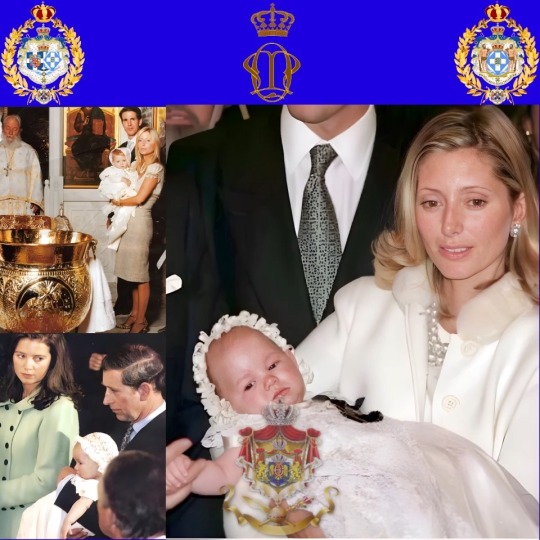



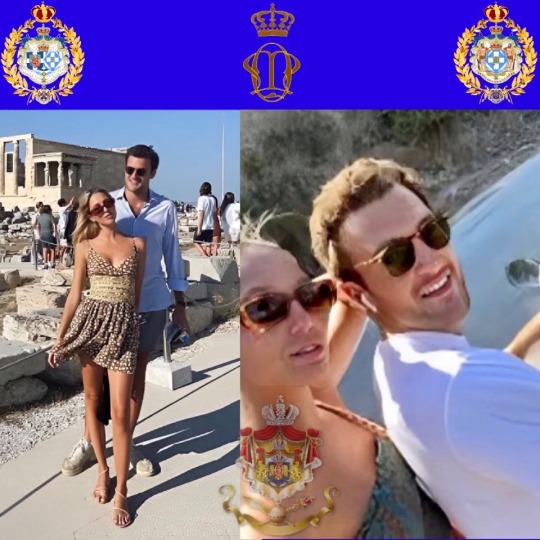

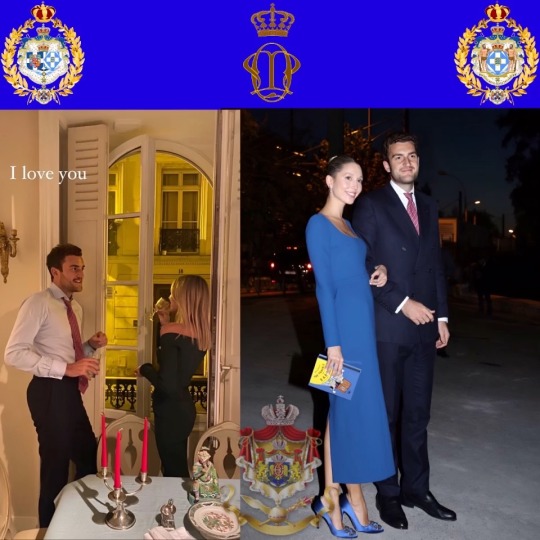
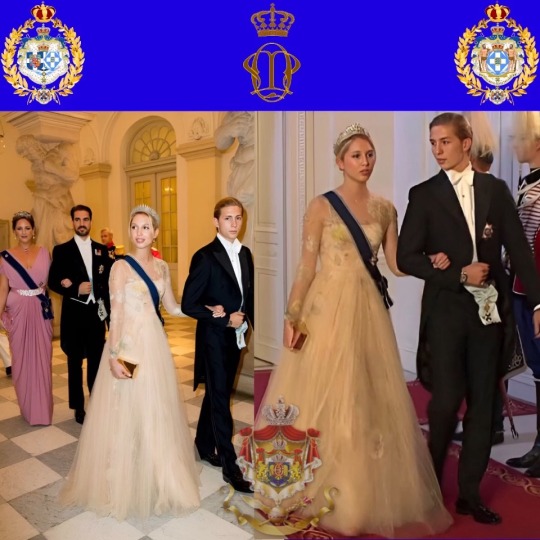


Happy 27 th birthday to HRH Princess Maria-Olympia of Greece and Denmark (born 25 July 1996)
She is a fashion model, socialite and member of the non-reigning Greek royal family. She is the oldest child and only daughter of Pavlos, Crown Prince of Greece, and his wife, Marie-Chantal Miller. Her paternal grandparents are Constantine II of Greece and Anne-Marie of Denmark, who were the last King and Queen of the Hellenes, while her maternal grandfather is duty free entrepreneur Robert Warren Miller.
Princess Maria-Olympia of Greece and Denmark was born on 25 July 1996 at Weill Cornell Medical Center in New York City to Pavlos, Crown Prince of Greece, and his wife, Marie-Chantal. She was baptized in the Greek Orthodox Church by Patriarch Bartholomew I of Constantinople at the Church of St. George in Istanbul, Turkey, on 22 December 1996.Her godparents are her paternal aunt Princess Alexia of Greece and Denmark, her maternal aunt Pia Getty, her grandfather's second cousin Charles III, and Prince Michael of Greece and Denmark. Her family relocated to London, where she spent most of her childhood. She is the older sister of Prince Constantine-Alexios, Prince Achileas-Andreas, Prince Odysseas Kimon, and Prince Aristidis-Stavros.
The princess herself uses the name Olympia in everyday life.
Olympia of Greece attended her first couture show around the age of 11 in Rome together with her parents.
She studied art history, theatre, photography, and graphic design while in boarding school in Switzerland with hopes of pursuing a career in art or fashion.She interned in Dior's couture department, at the age of 17.
In 2016, Maria-Olympia studied photography at Parsons School of Design in New York. It was reported that she was romantically involved with her godfather's son and third cousin once removed Prince Harry, but a senior official representative of the British Royal Family denied the rumors. In April 2016, Maria-Olympia posed alongside two of her first cousins, Isabel Getty and Princess Talita von Fürstenberg in a Vanity Fair feature.As of 2021 she is in a relationship with Peregrine Pearson, the son and heir of Michael Pearson, 4th Viscount Cowdray.
She revealed she has dyslexia in an interview with Tatler.
Maria-Olympia registered at college in New York in the fall of 2015.In 2019 she completed her studies with a degree from New York University's Gallatin School of Individualized Study in Fashion Business and Marketing.
She has modeled for Teen Vogue, Town & Country, Tatler, Hello!, ¡Hola!,and W In June 2017, Maria-Olympia walked the runway for Dolce & Gabbana.She has also modeled for Michael Kors.She became the face for Pretty Ballerinas's Spring/Summer 2019 collection.
Using her name Olympia the Saks Potts S/S 2019 show during Copenhagen Fashion Week in August 2018 was named OLYMPIA after her and opened by the princess herself as the first model on the stage.
She revealed she has dyslexia in an interview with Tatler.
Maria-Olympia registered at college in New York in the fall of 2015.In 2019 she completed her studies with a degree from New York University's Gallatin School of Individualized Study in Fashion Business and Marketing.
She has modeled for Teen Vogue, Town & Country, Tatler, Hello!, ¡Hola!,and W In June 2017, Maria-Olympia walked the runway for Dolce & Gabbana.She has also modeled for Michael Kors.She became the face for Pretty Ballerinas's Spring/Summer 2019 collection.
Using her name Olympia the Saks Potts S/S 2019 show during Copenhagen Fashion Week in August 2018 was named OLYMPIA after her and opened by the princess herself as the first model on the stage.
Χρόνια πολλά για τα 27α γενέθλια στην ΑΒΥ Πριγκίπισσα Μαρία-Ολυμπία της Ελλάδας και της Δανίας (γεν. 25 Ιουλίου 1996)
Η Μαρία Ολυμπία είναι μοντέλο μόδας, κοινωνικά και μέλος της ελληνικής βασιλικής οικογένειας. Είναι το μεγαλύτερο παιδί και μοναχοκόρη του Παύλου, διαδόχου της Ελλάδας, και της συζύγου του, Μαρί-Σαντάλ. Οι παππούδες της από τον πατέρα της είναι ο Κωνσταντίνος Β' της Ελλάδας και η Άννα Μαρία της Δανίας, που ήταν ο τελευταίος βασιλιάς και βασίλισσα των Ελλήνων, ενώ ο παππούς της από τη μητέρα της είναι ο επιχειρηματίας Ρόμπερτ Γουόρεν Μίλερ.
Η πριγκίπισσα Μαρία-Ολυμπία της Ελλάδας και της Δανίας γεννήθηκε στις 25 Ιουλίου 1996 στο Ιατρικό Κέντρο Weill Cornell στη Νέα Υόρκη από τον Παύλο, διάδοχο της Ελλάδας, και τη σύζυγό του, Μαρί-Σαντάλ. Βαπτίστηκε στην Ελληνική Ορθόδοξη Εκκλησία από τον Πατριάρχη Κωνσταντινουπόλεως Βαρθολομαίο Α' στην Εκκλησία του Αγίου Γεωργίου στην Κωνσταντινούπολη, Τουρκία, στις 22 Δεκεμβρίου 1996. Νονοί της είναι η θεία της από τον πατέρα της Πριγκίπισσα Αλεξία της Ελλάδας και της Δανίας, η θεία της από την πλευρά της μητέρας της Pia Getty, ο δεύτερος ξάδερφος του παππου της Πρίγκιπας Μιχάηλ της Ελλάδας και Δανίας .
Η οικογένειά της μετακόμισε στο Λονδίνο, όπου πέρασε το μεγαλύτερο μέρος της παιδικής της ηλικίας. Είναι η μεγαλύτερη αδερφή του πρίγκιπα Κωνσταντίνου-Αλεξίου, του πρίγκιπα Αχιλλέα-Ανδρέα, του πρίγκιπα Οδυσσέα Κίμωνα και του πρίγκιπα Αριστείδη-Σταύρου.
Η ίδια η πριγκίπισσα χρησιμοποιεί το όνομα Ολυμπία στην καθημερινή ζωή.
Η Ολυμπία της Ελλάδος παρακολούθησε το πρώτο της σόου ραπτικής γύρω στα 11 της στη Ρώμη μαζί με τους γονείς της.
Σπούδασε ιστορία τέχνης, θέατρο, φωτογραφία και γραφιστική ενώ φοιτούσε σε οικοτροφείο στην Ελβετία με τις ελπίδες να ακολουθήσει μια καριέρα στην τέχνη ή τη μόδα. Έκανε πρακτική στο τμήμα ραπτικής του Dior, σε ηλικία 17 ετών.
Το 2016, η Μαρία-Ολυμπία σπούδασε φωτογραφία στο Parsons School of Design στη Νέα Υόρκη. Αναφέρθηκε ότι είχε ρομαντική σχέση με τον γιο του νονού της και τον τρίτο ξάδερφό της τον πρίγκιπα Χάρι, αλλά ένας ανώτερος επίσημος εκπρόσωπος της βρετανικής βασιλικής οικογένειας διέψευσε τις φήμες. Τον Απρίλιο του 2016, η Μαρία-Ολυμπία πόζαρε μαζί με δύο από τα πρώτα της ξαδέρφια, την Isabel Getty και την πριγκίπισσα Talita von Fürstenberg σε μια ταινία Vanity Fair. Από το 2021 είναι σε σχέση με τον Peregrine Pearson, τον γιο και κληρονόμο του Michael Pearson, 4ου Viscount Cowdray.
Αποκάλυψε ότι έχει δυσλεξία σε συνέντευξή της στο Tatler.
Η Μαρία-Ολυμπία εγγράφηκε στο κολέγιο της Νέας Υόρκης το φθινόπωρο του 2015. Το 2019 ολοκλήρωσε τις σπουδές της με πτυχίο από το Gallatin School of Individualized Study in Fashion Business and Marketing του Πανεπιστημίου της Νέας Υόρκης.
Έχει κάνει μοντέλο για τις Teen Vogue, Town & Country, Tatler, Hello!, ¡Hola!, και W Τον Ιούνιο του 2017, η Maria-Olympia περπάτησε στην πασαρέλα των Dolce & Gabbana. Έχει επίσης κάνει μοντέλο για τον Michael Kors. Έγινε το πρόσωπο για τη συλλογή Άνοιξη/Καλοκαίρι 2019 των Pretty Ballerinas.
Χρησιμοποιώντας το όνομά της Olympia, η επίδειξη Saks Potts S/S 2019 κατά τη διάρκεια της Εβδομάδας Μόδας της Κοπεγχάγης τον Αύγουστο του 2018 ονομάστηκε OLYMPIA από αυτήν και άνοιξε από την ίδια την πριγκίπισσα ως το πρώτο μοντέλο στη σκηνή
#kingconstantine#danishroyalfamily#crownprincepavlos#queenannemarie#greek royal family#house of romanov#greekroyals#crownprincessmariechantal#danishroyals#princeconstantinealexios
4 notes
·
View notes